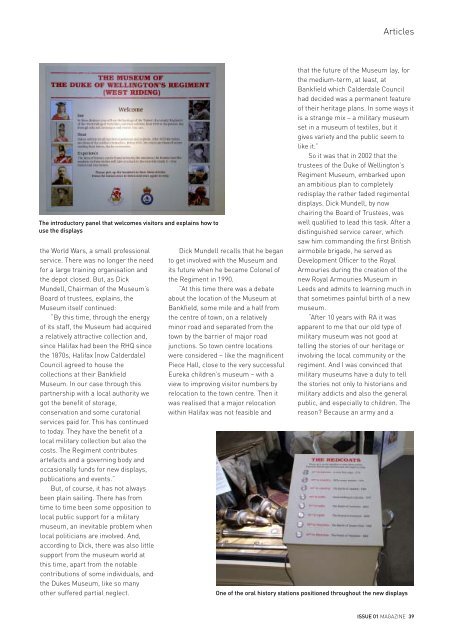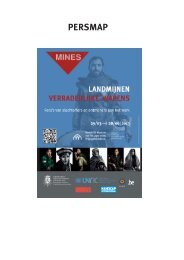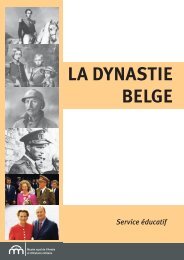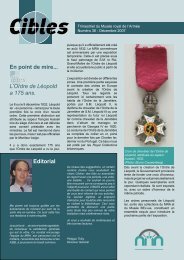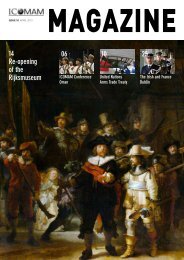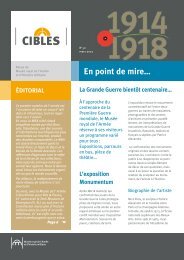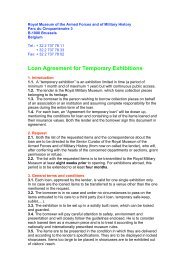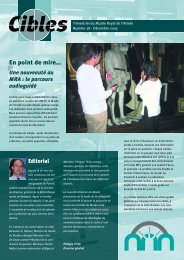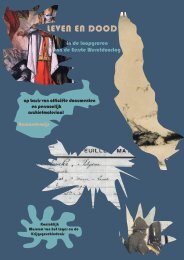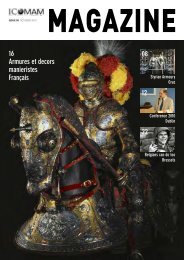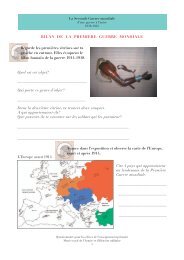Download issue 02 (Low resolution), April 2009 (PDF, 1,7 MB)
Download issue 02 (Low resolution), April 2009 (PDF, 1,7 MB)
Download issue 02 (Low resolution), April 2009 (PDF, 1,7 MB)
- No tags were found...
Create successful ePaper yourself
Turn your PDF publications into a flip-book with our unique Google optimized e-Paper software.
ArticlesThe introductory panel that welcomes visitors and explains how touse the displaysthe World Wars, a small professionalservice. There was no longer the needfor a large training organisation andthe depot closed. But, as DickMundell, Chairman of the Museum’sBoard of trustees, explains, theMuseum itself continued:“By this time, through the energyof its staff, the Museum had acquireda relatively attractive collection and,since Halifax had been the RHQ sincethe 1870s, Halifax (now Calderdale)Council agreed to house thecollections at their BankfieldMuseum. In our case through thispartnership with a local authority wegot the benefit of storage,conservation and some curatorialservices paid for. This has continuedto today. They have the benefit of alocal military collection but also thecosts. The Regiment contributesartefacts and a governing body andoccasionally funds for new displays,publications and events.”But, of course, it has not alwaysbeen plain sailing. There has fromtime to time been some opposition tolocal public support for a militarymuseum, an inevitable problem whenlocal politicians are involved. And,according to Dick, there was also littlesupport from the museum world atthis time, apart from the notablecontributions of some individuals, andthe Dukes Museum, like so manyother suffered partial neglect.Dick Mundell recalls that he beganto get involved with the Museum andits future when he became Colonel ofthe Regiment in 1990.“At this time there was a debateabout the location of the Museum atBankfield, some mile and a half fromthe centre of town, on a relativelyminor road and separated from thetown by the barrier of major roadjunctions. So town centre locationswere considered – like the magnificentPiece Hall, close to the very successfulEureka children’s museum – with aview to improving visitor numbers byrelocation to the town centre. Then itwas realised that a major relocationwithin Halifax was not feasible andthat the future of the Museum lay, forthe medium-term, at least, atBankfield which Calderdale Councilhad decided was a permanent featureof their heritage plans. In some ways itis a strange mix – a military museumset in a museum of textiles, but itgives variety and the public seem tolike it.”So it was that in 20<strong>02</strong> that thetrustees of the Duke of Wellington’sRegiment Museum, embarked uponan ambitious plan to completelyredisplay the rather faded regimentaldisplays. Dick Mundell, by nowchairing the Board of Trustees, waswell qualified to lead this task. After adistinguished service career, whichsaw him commanding the first Britishairmobile brigade, he served asDevelopment Officer to the RoyalArmouries during the creation of thenew Royal Armouries Museum inLeeds and admits to learning much inthat sometimes painful birth of a newmuseum.“After 10 years with RA it wasapparent to me that our old type ofmilitary museum was not good attelling the stories of our heritage orinvolving the local community or theregiment. And I was convinced thatmilitary museums have a duty to tellthe stories not only to historians andmilitary addicts and also the generalpublic, and especially to children. Thereason? Because an army and aOne of the oral history stations positioned throughout the new displaysISSUE 01 MAGAZINE 39


